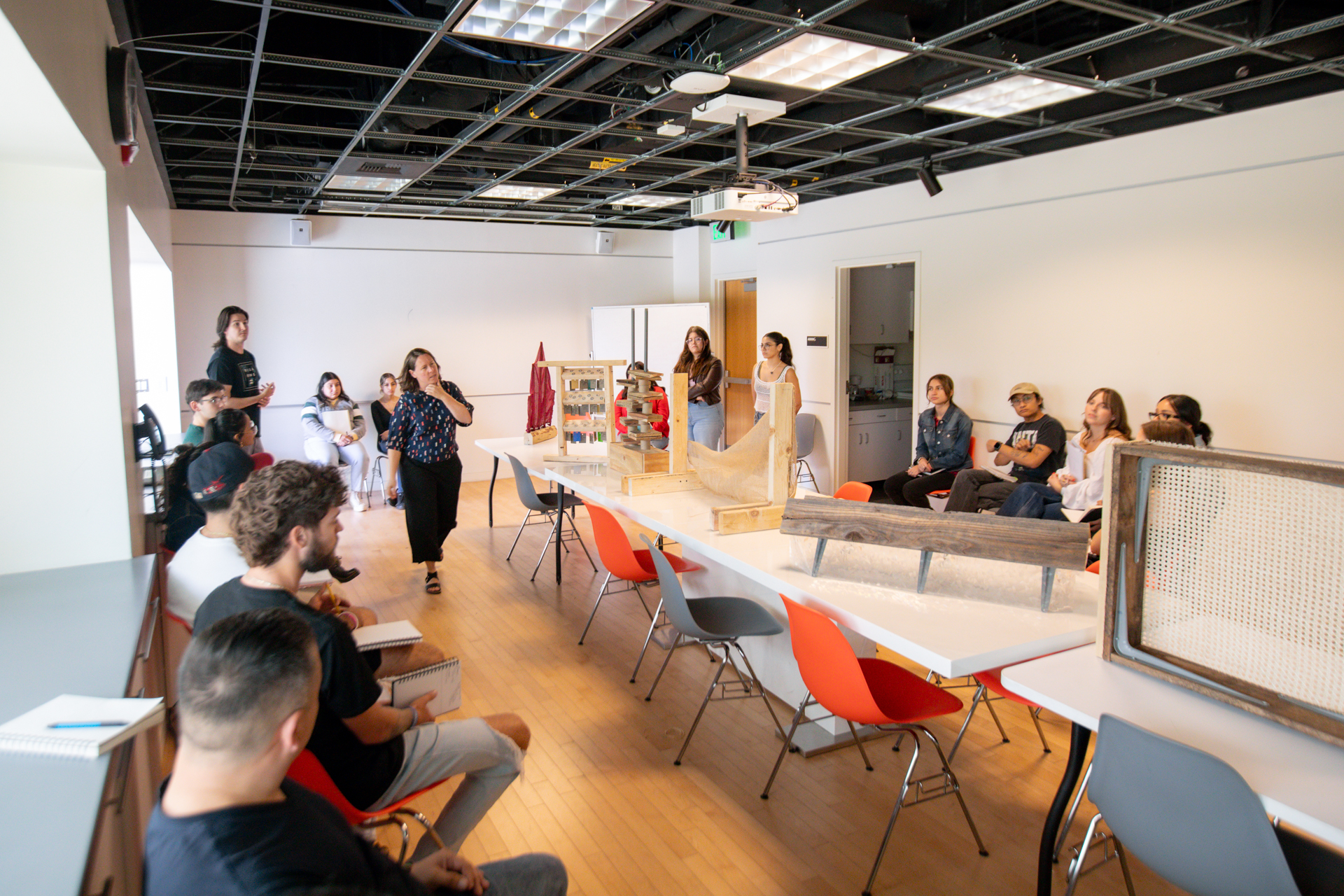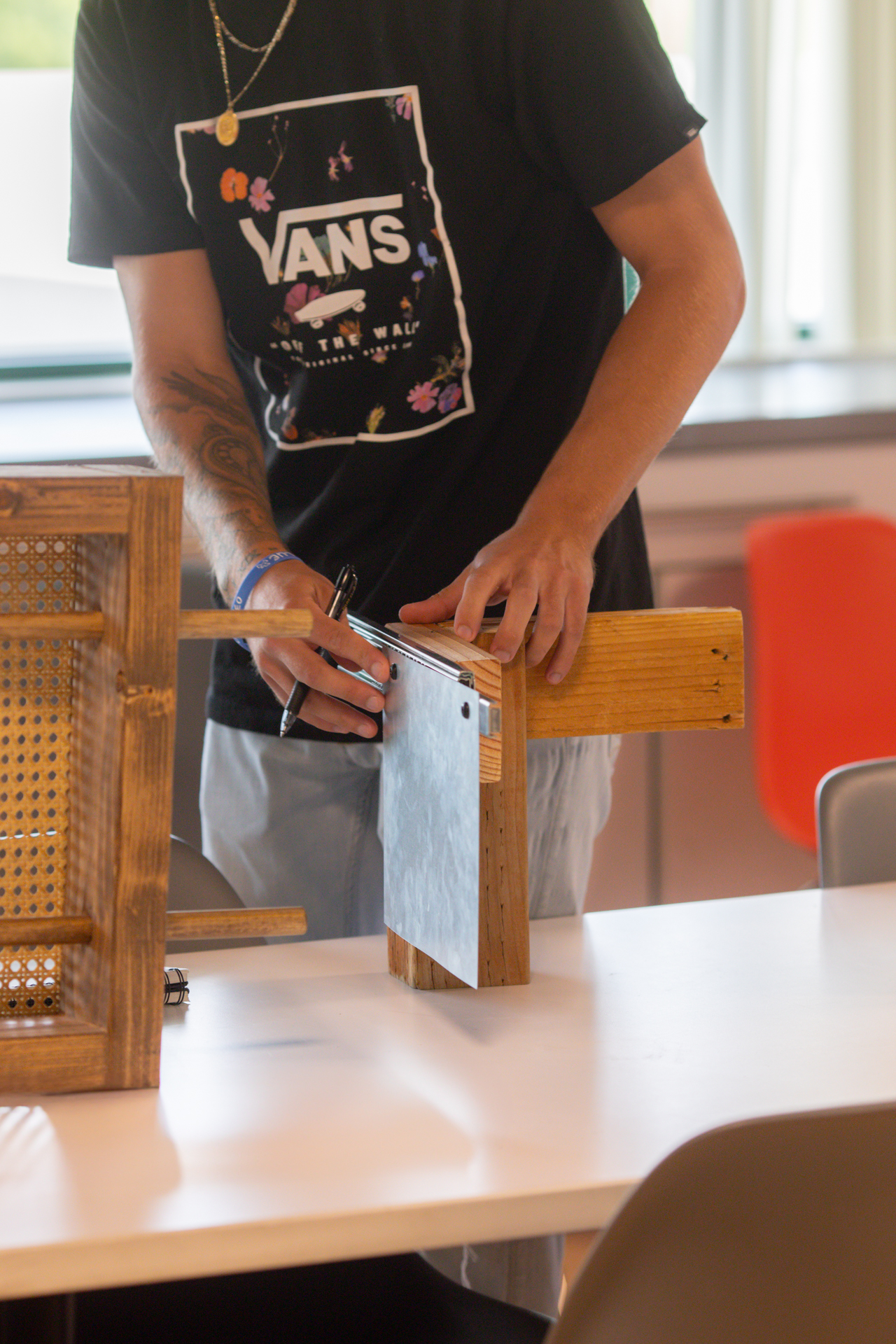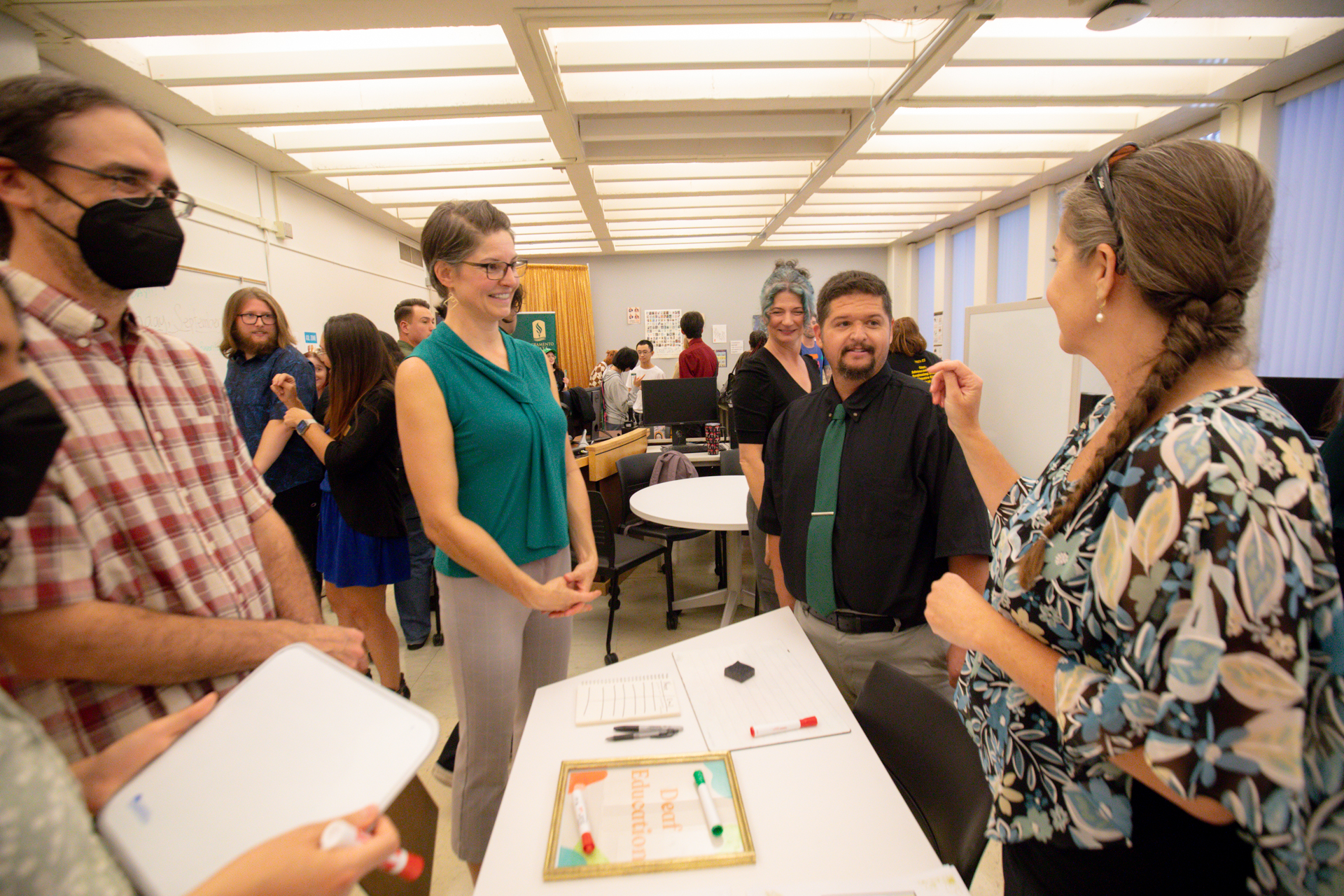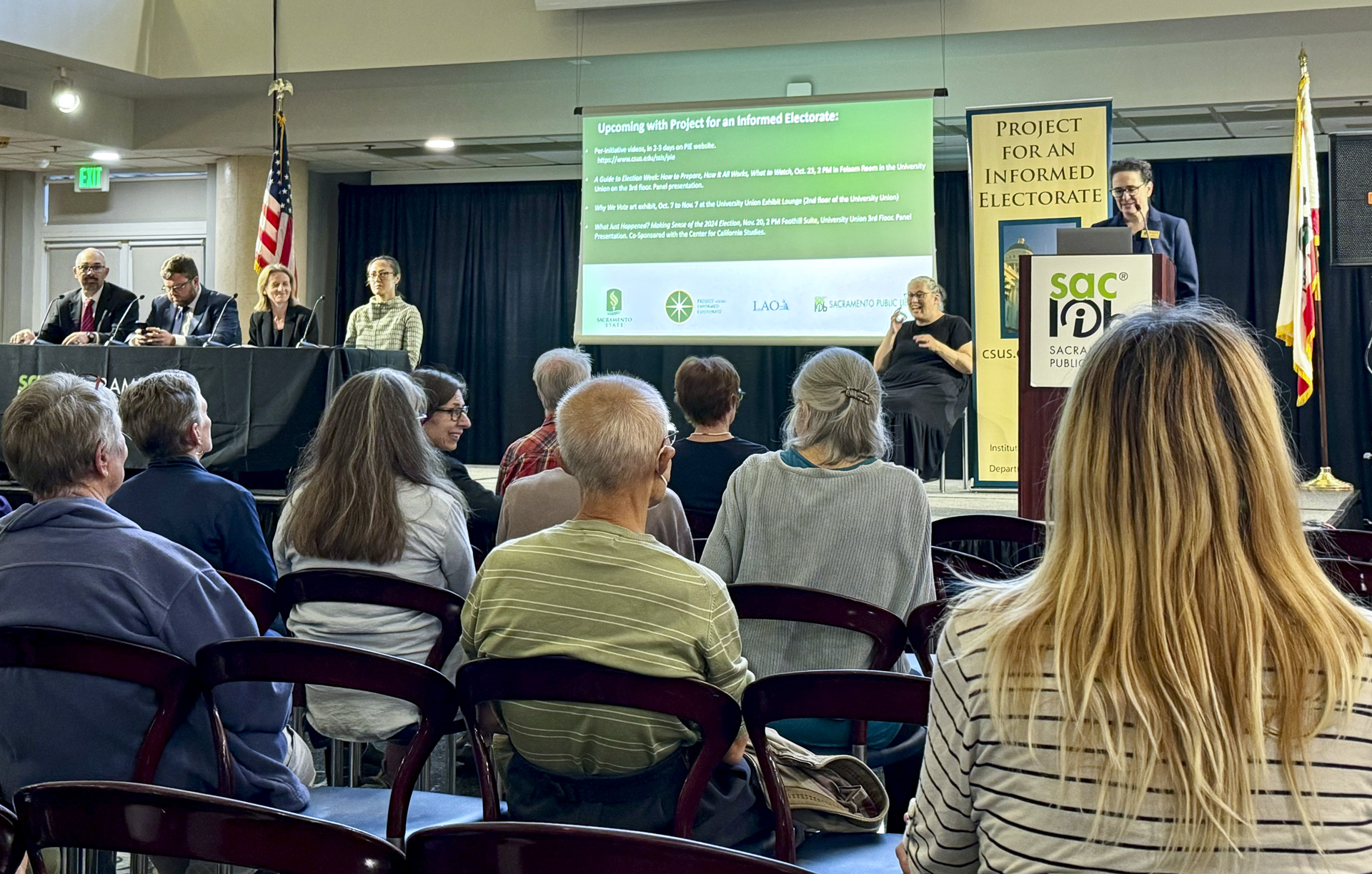Story Content
Sac State launches innovative four-year BFA in Architecture, paving new paths to industry success

October 18, 2024
Sacramento State students and others in the region who are interested in pursuing architecture now have a new, streamlined pathway into the industry.
The new Bachelor of Fine Arts in Architecture Studies program, launched this fall within the College of Arts and Letter’s Department of Design, is a unique, non-professional degree that allows graduates to begin their careers after four years of study, rather than the usual five.
The program aims to prepare students for diverse career paths in architecture, including design, advocacy, research and emerging fields such as space habitat design.
“There are a lot of different ways to engage in architecture,” said Carolyn Gibbs, a professor of Design, professional architect and director of the new BFA program. “You don’t just have to be a designer to practice architecture.”

Typically, students interested in the field must obtain a five-year, professional bachelor’s in architecture degree to obtain their license. But California uniquely allows graduates to substitute the fifth year of higher education with internship experience, allowing them to move into the workplace sooner.
“Because of that, and because of our student body, we wanted to pursue that avenue and then later on pursue a professional graduate program in a few years,” Gibbs said.
The department opted to create a BFA program to distinguish it not just from a five-year BArch program but also from four-year programs at other universities, often called environmental design programs, that incorporate architecture as just one part of a broader curriculum.
“We wanted to really help students understand that this is going to be architecturally focused, not more general, like an environmental design degree, and that it would eventually feed into a professional degree down the road,” Gibbs said.
Sac State’s program includes 78 units of major-specific coursework, with an emphasis on hands-on learning and studio-based projects. The curriculum includes technical aspects like structures, building technology and building science, along with design skills.
Classes will be offered in a mix of in-person and online formats, providing more flexibility for students. During its first year, Gibbs anticipates 200 students to enroll in the program, which also addresses key issues and current trends such as sustainability, climate mitigation and social justice issues including homelessness.
“Homelessness is a huge issue, obviously, in our nation and in our local community,” Gibbs said. “Last year, we partnered with (the School of) Social Work to do a symposium on homelessness that will happen every two years. A lot of seminars and technical courses and history courses are being created around social and environmental justice issues.”
Community partnerships will play a key role in the new program, including through leveraging existing relationships with the state and local chapters of the American Institute of Architects, inviting guest lecturers, visiting local firms, and tapping industry professionals to assess student projects.
Gibbs said the immense diversity of Sac State’s student body means the program can have a major impact on the industry and the region. Nearly half of the program’s students are Latine, she said, with growing numbers of Black and Middle Eastern students.
“Architecture as a field is not diverse,” she said. “One of the things that we are most proud of is that we are going to play a significant role in helping to diversify the field of architecture, at least in Northern California, and that’s an amazing thing to say.”
To learn more about the BFA in Architecture program, contact the Department of Design.
Media Resources
Faculty/Staff Resources
Looking for a Faculty Expert?
Contact University Communications
(916) 217-8366
communications@csus.edu


